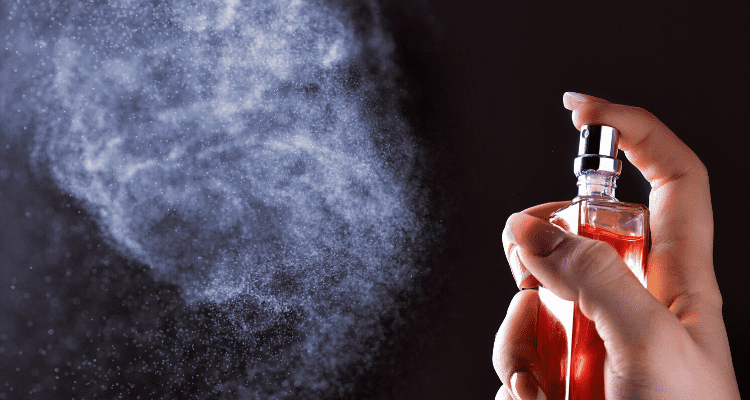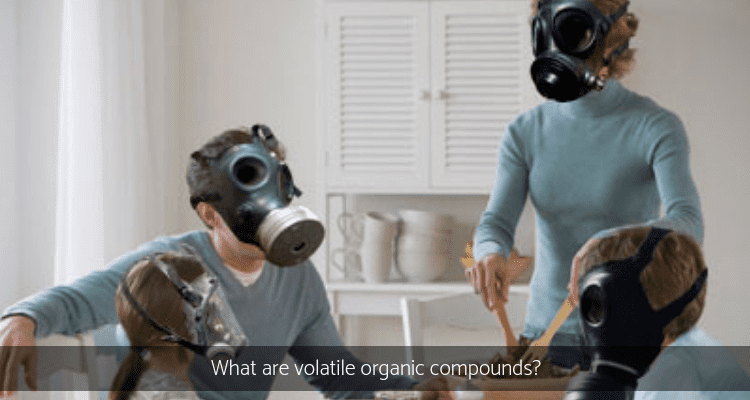Whether you are in your home, in the car, working in the office, in the shopping centre or learning in a class room, they are all man made structures that not only provide you shelter, but also support your health – mind, body and spirit.
Despite the length of time we spend indoors, around 90% of your life, there is relatively little research on indoor air quality world wide. Many of these pollutants have been insufficiently researched to determine exposure levels for the Australian population (Environment Australia 2001). What we do understand is that we are inhaling these contaminants almost continuously.
One of the top 6 significant indoor air pollutants in Australia is volatile organic compounds.
So, what are volatile organic compounds?
Volatile organic compounds or VOCs are the majority of chemicals you use and store in and around your home that release vapours and gases called “off-gassing” over an infinite period of time at room temperature.

They include personal care products such, air fresheners, fragrances, aftershave, moisturisers, hair sprays, body wash, soaps, cleaning products, right through to furnishings, building materials, paints and lacquers, insulations and carpeting, from craft materials, glues, permanent markers, dry cleaning to photographic solutions, formaldehyde found in upholstery foam, as well as toxic fumes from electrical appliances – television, DVD, stereo, computers, printers, photocopiers, to storing outside items such as pesticides, herbicides, aerosol sprays, petrol and benzene.
Some VOCs have no odours at all. Yet high levels of some VOCs, most people can smell. Be aware, odour levels do not indicate the level of risk from inhalation of this group of chemicals.
Each chemical has its own toxicity and potential for causing different health effects.
According to USA Environmental Protection Agency (2012), VOCs are inadvertently inhaled and / or absorbed through the skin can cause short term adverse health symptoms such as headaches, fatigue and lethargy, eye, nose and throat irritation, loss of concentration and co-ordination, dizziness, nervousness, insomnia, nausea, vomiting, confusion, visual disorders, drowsiness, depression, muscle and joints aches and pains, rash, cracked, dry skin, allergic dermatitis, shortness of breath, exacerbation of asthma.
There are no standards based on potential long term effects on health of polluted indoor air in the home.
Long term chronic exposure increases the risk of cancer, liver damage, kidney damage, central nervous system damage.
What are Volatile Organic Compounds that I could be using in my home?

Bleach, toilet cleaner, oven cleaner, drain cleaner, tile cleaner are all considered to be hazardous by EPA standards and harmful to human health.
Sodium hydroxide found in tile cleaner, toilet cleaner, oven cleaner, dishwashing liquid, laundry detergent, scrubbing cleansers, pre-spot cleaners, usually in spray container are immediate respiratory irritants. They can cause damage to mouth, eyes, nose, throat, skin; can cause liver and kidney damage.
Hydrochloric acid is found in toilet cleaners and fabric odour eliminators can damage skin, is fatal if ingested and harmful to health if inhaling fumes.
Butyl cellosolve is found in all purpose cleaners and is a respiratory irritant. You can find more details about volatile organic compound ingredients here at Household Products Database (2013).
Usually, these products and items are administered in small, enclosed rooms, while you are sweating away cleaning, breathing in the fumes not only through your nose, but also absorbing through your mouth, eyes, skin and clothes.
PRODUCT:
Naturally Home Starter Kit
Get back to basics and DIY! All the ingredients you need to make your own SAFE and EFFECTIVE cleaning products. The good old basics that our grandmothers used to clean with!

The best health protection measure is to limit your exposure to products and items when possible. Check the labels for warning signs such as POISON, TOXIC, CAUTION, CORROSIVE or WARNING.
If you think you may be experiencing health problems caused by VOCs, simply, don’t use them. Throw them out thoughtfully. Find and replace with an alternative, non toxic product. A range of safe, non toxic bathroom and kitchen cleaners are available from our on-line store. You can even read the ingredients on the label!
Ventilate, ventilate, ventilate!
Reduce levels in your home by opening windows and doors to allow off gassing to escape. Use products in well ventilated areas. If you are unable to ventilate, consider an air purifier, either hire or buy. A range of air purifiers are available from our on-line store Or hire from our Services area
Sources:
Environment Australia, 2001, Air toxics and Indoor Air Quality in Australia. (Online), Available: http://www.environment.gov.au/atmosphere/airquality/publications/sok/chapter6.html[6 September, 2012]
USAEnvironmental Protection Agency, 2012, Indoor Air Pollution: An Introduction for Health Professionals. (Online). Available: http://www.epa.gov/iaq/pubs/hpguide.html#VOCs [6 September2012]
Household Products Database, 2013, Health and Safety Information on Household Products. (Online). Available: http://householdproducts.nlm.nih.gov/ [6 September 2012]
Author
-
We’re glad you’re here. We’re Carol and Tony, founders of one of the longest running Healthy Home Blogs in the world, Mitey Fresh Australia. We’ve been on this journey for the last 25 years and are passionate about helping families sift through health hazards and triggers like allergens, mould, water damage, chemicals and EMFs, to get clarity about what’s toxic and what’s not so they can create a healthy and happy home for their family they love. Each month, people visit this blog seeking focus on the health and wellbeing of their loved ones, sustainable and effective practice tips and guides, to help create and manage healthier indoor spaces, improve the built environment that is pleasing to the senses and support healthy living and nature, every day. Starting this blog was to help change people’s lives, one family at a time, and we can’t wait to share how its allowed us to stand next to you and show you how interpreting these synergies between buildings and the environment they are built in will impact upon the health and well-being of those who occupy them. Find out more about Healthy Homes and what this blog can do for you!





